Hindsight is a good remedy for perceived mediocrity. Looking back on the 20-odd year run of the French Lago Talbot, it is easy to see that the cars of Anthony “Tony” Lago (born on this date in Venice in 1893)were not only were winners on the concours circuit, but significant winners on the Grand Prix tracks in the post war era. After five major Grand Prix wins, nine lesser ones and victory at Le Mans in 1950, Cyril Posthumus would write, “Lago, in his retirement years could look back on a remarkable chapter of accomplishment.”
On the day of his birth, we remember the cars of Tony Lago, thanks to VeloceToday reader and longtime vintage racer, Peter Giddings.
From the dramatic concours-winning Figoni et Falaschi coupes of late 1930s to the last-of-the-line Lago America coupes of 1956, Lago Talbots came on the scene with style and flair, making the most of a meager budget and limited facilities. In between the flashy sports cars were the real stars…the series of remarkable 4.5 liter Grand Prix cars that were campaigned primarily by privateers from 1939 to 1952.
Peter Giddings can claim to have been racing Lago Talbots for over thirty years. Although he recently parted with the ex-Etancelin car #110054 (which went to his good friend David Duthu), Giddings has an enormous amount of experience with the GP Lagos. He also owned and raced the ex Chiron/Whiteford French/Australian Grand Prix winning Lago Talbot #110007 for ten years. Like no one else, Giddings is the guy in the know.
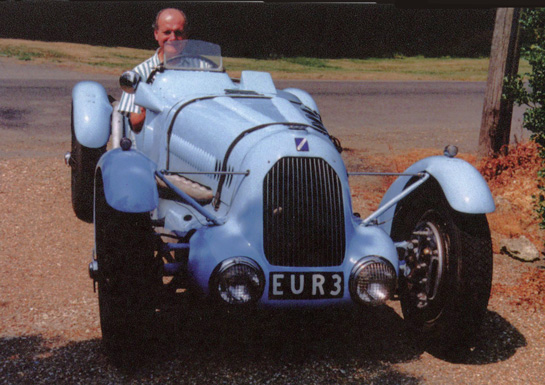
The ex-Ron Smith Talbot-Darracq 150 which inspired Peter Giddings. Photo courtesy of David Venables.
Less well known is the story of how Giddings came to be so thoroughly involved with vintage cars. That too, was due to a Lago Talbot, albeit called, for a variety of reasons, a Darracq. Giddings explains: “Back in the late ’50s my friend Ron Smith raced his Darracq in historic events. This particular Lago Talbot had an amazing history as in addition to winning the TT (with the name Darracq), Louis Chiron had won the 1937 French Grand Prix with it as well. It was this TT-winning Darracq that gave me my first taste for these wonderful vintage cars. Smith shared his mews garage with another friend of mine, Basil Bowman, who owned sister car and consecutive numbered pre-war 4 ½ liter two-seater Le Mans Talbot. Thus I was able to ‘wrench’ on two of these wonderful cars and in return, I experienced from time to time, the never to be forgotten thrill of driving these long-legged monsters Thus, the die was cast and I determined that one day I would own a Lago Talbot, finally achieving that goal in the early 1970s through my purchase of Louis Chiron’s 1949 French Grand Prix winning car.”
Both the street cars and the Grand Prix versions of the Lago Talbots featured two interesting technical aspects. The first, a semi-automatic gearbox and second, a hemispherical combustion chamber fitted to a Talbot 3 liter (known as the 23CV) iron block from a production car. The new aluminum head was designed by Italian Walter Becchia, who had worked for the STD combine before Lago got control of the French Talbot side of the business in 1934. The camshaft was low in the block and required lengthy pushrods. In this form and with an increase to 4 and 4.5 liters, the Talbot produced about 130 dependable horsepower.
In 1948 engineer Carlo Marchetti updated the old 23CV engine with a high camshaft position that reduced the length of the pushrods. According to Giddings, “This high cam system, with relatively large valves, provided fair breathing. But while it did away with not having to use the complication and cost of twin overhead camshafts, the reciprocating parts weighed a ton (almost literally), and the safe revolution range was extremely low at 4500 rpm.” By 1950 the unit was producing 280 hp at 5000 rpm, though estimates vary by as much as 50 hp. For Lago, it was an inexpensive way to create a powerful engine but woefully lacking the sophisticated designs of the competition.
The gearbox differs from normal racing practice. Approaching a corner, one of the four gears is selected via the lever near the steering wheel. The gear is engaged only when the clutch is depressed and released, most effectively perhaps when setting up for the corner. It was hard to image why Anthony Lago would have installed the diabolical, heavy and complex Wilson pre-selector unit in his racecars, but before taking on Talbot, Tony Lago was a general manager of the Wilson Self-Changing Gear Co. “While Lago had always shied away from fully automatic transmissions, he was keen to fully exploit the horsepower-robbing Wilson self-changing gear box, as he was one of those who had developed the weighty, complex gear box in the first place,” said Giddings. “There is a quaint story to the effect that the designer of this box ended up in the mad-house and my good friend, David McCarthy who has now rebuilt two of these gear boxes for me, has only narrowly escaped this fate himself!”
Giddings realized the gearbox had a positive side. “The road holding of these cars (far worse, in my opinion, than, for example, my 1924 GP Bugatti!) is so horrendous, that having both hands on the steering wheel prior to, through and immediately after a bend (particularly in the wet) thanks to being able to pre-select the gear next needed, is of major import.”
If anyone wonders, as we did, what is done to match the engine revs to the transmission when downshifting (double clutching), Giddings told us “You can’t really, unless you go via “Point Mort” (neutral) every time. On the other hand, and without double declutching per se, at the moment of pedal depression, when the band is loosened from the previous gear, and the next one is being picked up, it is possible to change revs”. On that subject Giddings clarifies that the clutch not really a clutch but a changing pedal. “Mind you, going up and down a Wilson type box, it pays to let the “clutch”, really the next pre-selected gear changing pedal (i.e. no clutch per se) out gently, as (and like Russian roulette), you do not always get the gear indicated on the quadrant!” Set up correctly, they were nevertheless reliable, a key factor in the success of the overweight race cars.
The driveshaft was offset through an enclosed gear train, leading to a standard live rear end with an offset differential supported by semi-elliptic springs. Giddings describes what this meant to the driver: “You sit way down in the cockpit, with legs widely spread around the large pre-selector gearbox. Your feet are higher than your bottom and since you sit somewhat offset the huge rear tires are inches away from your shoulder. Duncan Hamilton used to quip that he did not need to bother with the tach since he could look at the rear tires and gauge what revs he was getting by the height of the flames![smoke].”
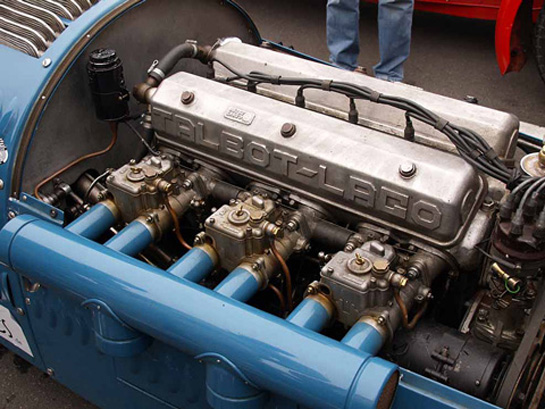
A portrait of a Lago Talbot engine with DCOE Webers. Giddings adds that in addition to single barrel down draft Zenith EX32s, which were prone to catching fire as a result of blow back (hence the flame trap bazookas!), Lago also fitted twin side draft Zenith and Solexes, whilst side draft Webers were officially used at the very end, albeit proper early sand cast Weber 45 DCO3s. Photo by Alessandro Gerelli.
As conventional as the rear suspension might have been, the front was sturdy, but a design perhaps more fitting for a Cooper JAP than a heavy (2450 lbs) Grand Prix car. Writes Giddings, “… independent (very!) wishbone suspension was utilized, incorporating a standard Talbot system. The top wishbones were A-arm fabrications made of pressed, welded, steel plate, pivoting on the top of the chassis rail via two back Houdaille shock absorbers additionally aided by a pair of friction shock absorbers of Repusseau manufacture. At the bottom a traverse leaf spring, which also served as the lower wishbone, was directly attached to the king pin/hub carriers.” However, things never fell off of Tony’s Talbots, and Lago was pleased with the fact that “…no one was ever killed in my cars.”
For a brief period of time immediately after WWII before Maserati, Ferrari and Alfa Romeo came onto the scene, Lago Talbots did extremely well in the nascent Grand Prix events across Europe. Even after the Italians went their winning ways, they were often reliable enough and used far less fuel than their 1500cc supercharged competitors and could still do well with the wind in the right direction. Cycle-fendered versions won at Le Mans and were rebodied into attractive, large displacement sports cars which continued to race until 1957.
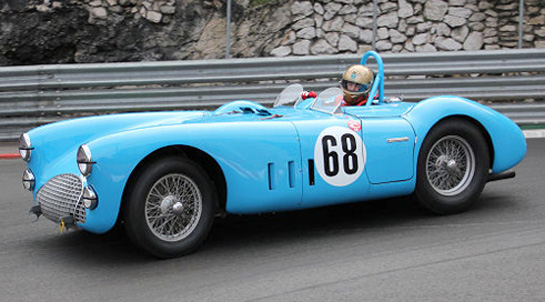
One of the two special bodied 4.5 Talbots prepared for the 1952 Le Mans. Photo by Hugues Vanhoolandt.
After 1956, production of the Lago Talbots virtually ceased. In late 1960, at the still-young age of 68, Lago died…content that he was able to contribute so much with so little to the sport he loved.
Lago Talbot Race Victories (compiled by Cyril Posthumus)
1948
Coupe du Salon, Montlhéry, Rosier
1949
Paris GP Montlhéry, Etancelin
GP des Frontières, Chimay, Mairesse
Belgian Grand Prix, Rosier
French GP, Rheims, Chiron
GP du Salon, Montlhéry, Sommer
1950
Paris GP, Montlhéry, Grignard
Le Mans 24hour, Rosier
Albi GP, Rosier
Dutch GP, Rosier
Argentine 500 Miles, Fangio
1951
Bordeaux GP, Rosier
Dutch GP, Rosier
1952
Casablanca 12 hours Sports Car, Pozzi/Vincent
GP of Finland, Laurent
Australian GP, Whiteford
1953
Australian GP, Whiteford
Pierre Abeilon’s “Talbot Lago de Course” is the bible on the Lago Talbot and very hard to find. One is available from our friends at Autobooks-Aerobooks
Peter Giddings’ website is a great source of information about all of the cars he has raced.
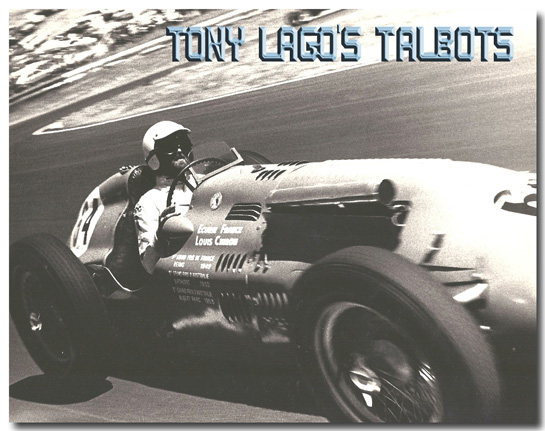
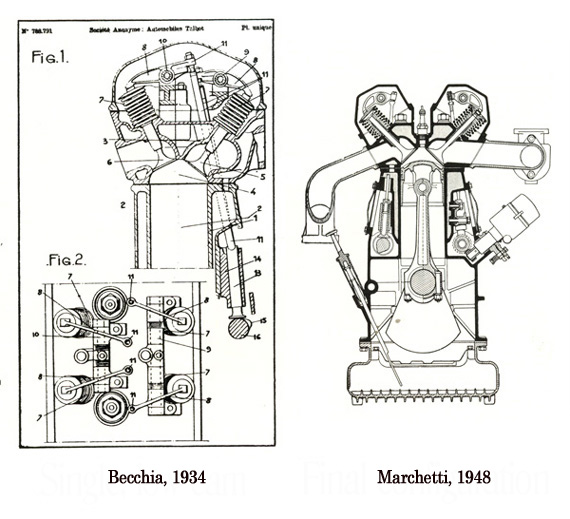
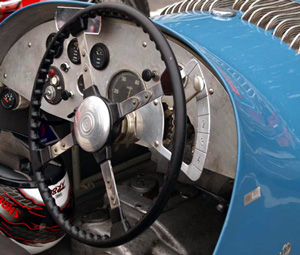
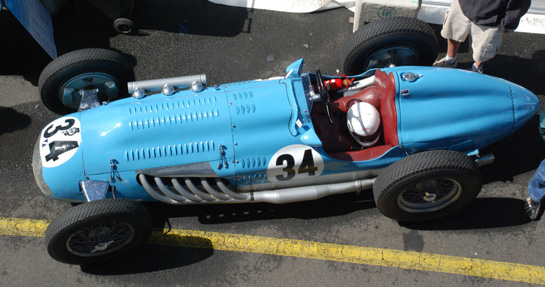
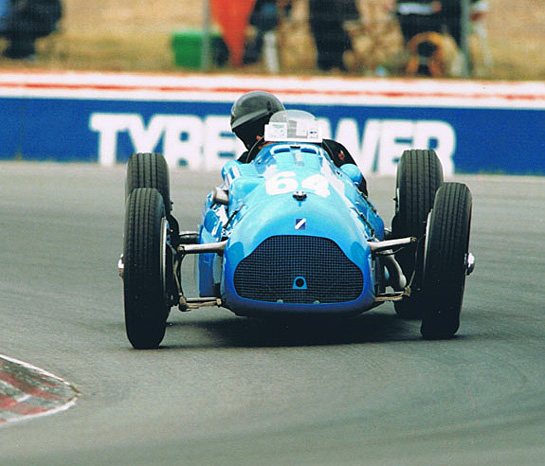
Thank you! It’s always nice to read about these remarkable cars. As it is I one owned one. The nr. 9 Le Mans Car of 1952 ch.nr 110060 which I later sold to Anthony Blight . I was a young lad then, bought the car for abt 1000 USD and sold it for abt 6000 USD. Couldn’t afford to restore it. I now drive an M5…
A few years ago , while admiring the Reg Hunt Maserati 300s, I heard Reg telling another observer that his Lago-Talbot was the faster of the two.!
I was lucky enough to see the Doug Whiteford car win the AustralianG.P……..
Dear Peter
I have written a new book about the Talbot Lago Grand Sport road cars which is coming in Dalton Watson in August. Go here to learn more:
http://www.daltonwatson.com/homepage/forthcoming-titles
I can not help but wondering if your first GP car was the one that came from Lindley Locke?
please get in touch with me on peter@bestprice.dk
I too once owned a Talbot Lago: a Dinky Toy purchased from my Toronto hobby shop in the early ’50s when they were sold out of XK120s. Must have been one of the Le Mans cars. My next and last Talbot was a small unsporting sedan, rented in Brest in 1982
Why does the author refer to the cars as Lago Talbots? I have always heard them referred to as Talbot-Lagos, and even the valve cover photo spells that out…
Interesting reading the review “Tony Lago’s Talbots”. I have owned & raced the ex Phillipe Etancelin GP car 110008 since the early 80s. I agree the racing Wilson gearbox is probably the Achilles Heel to the car in that it can be a regular large expense to overhaul if misused, it also requires a lot of work to remove and re-instal. However the box is fabulous in use and requires little physical effort.
As for the comments driving the GP Talbot, i can only say that i get great enjoyment from what i think is and excellent handling car, but it only rewards when got by the “Scruff of the Neck” somewhat rally style, surprisingly even in the wet !
Some years ago whist waiting in the Silverstone holding paddock for a pre 52 GP race, i clocked one Froilan Gonzalez making a be-line through the mouth watering grid two thumbs up towards my Talbot. He told me that he and Fangio loved driving these cars whenever the opportunity arose…………… .
From Peter Giddings…
Norm,
You saw Doug Whiteford’s second Talbot GP car, which was to have been of later spec. to his first, and initially it was not.
After much wrangling, Doug did get all of the missing “go faster” pieces, but much time had been lost, and along with much of Doug’s enthusiasm,
Doug’s greatest Talbot Lago successes came with his first Talbot Lago GP car.
Reg’s ex Maserati 300S now lives close by to me in California. It’s a great car, fitted from new with a 5 speed transaxle.
When Reg was working on maximum performance from his Talbot Lago GP, he would set up various buckets containing different methanol blends into which he would poke a long flexible pipe connected to the engine’s mechanical pump, and listen to the change in note ….. fun times!
As far as his Talbot Lago GP car being faster than his 300S — yes possibly in a straight line from a standing start (besides, his 300S had a duff head — since rectified), but around a typical road course, I hardly think so.
Regards.
Peter
Geoff,
Thought I got to this but it slipped by. We discussed which way to put the name; it has been seen many times both ways. Finally, I decided to go with Cyril Posthumus, who wrote a very nice history of the GP cars. Posthumus used “Lago Talbot”.
Editor
Be that as it may, the correct name is Talbot-Lago.